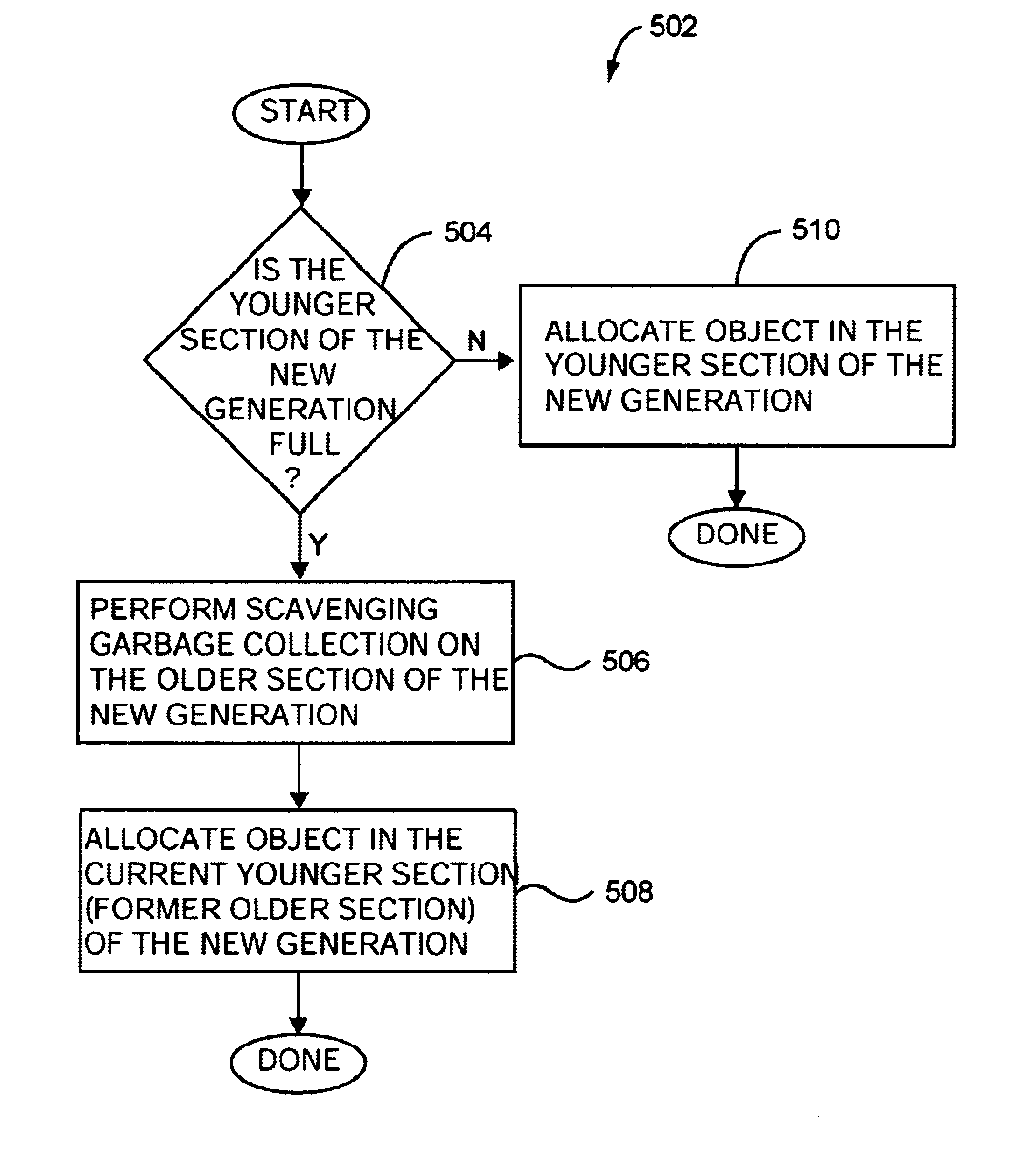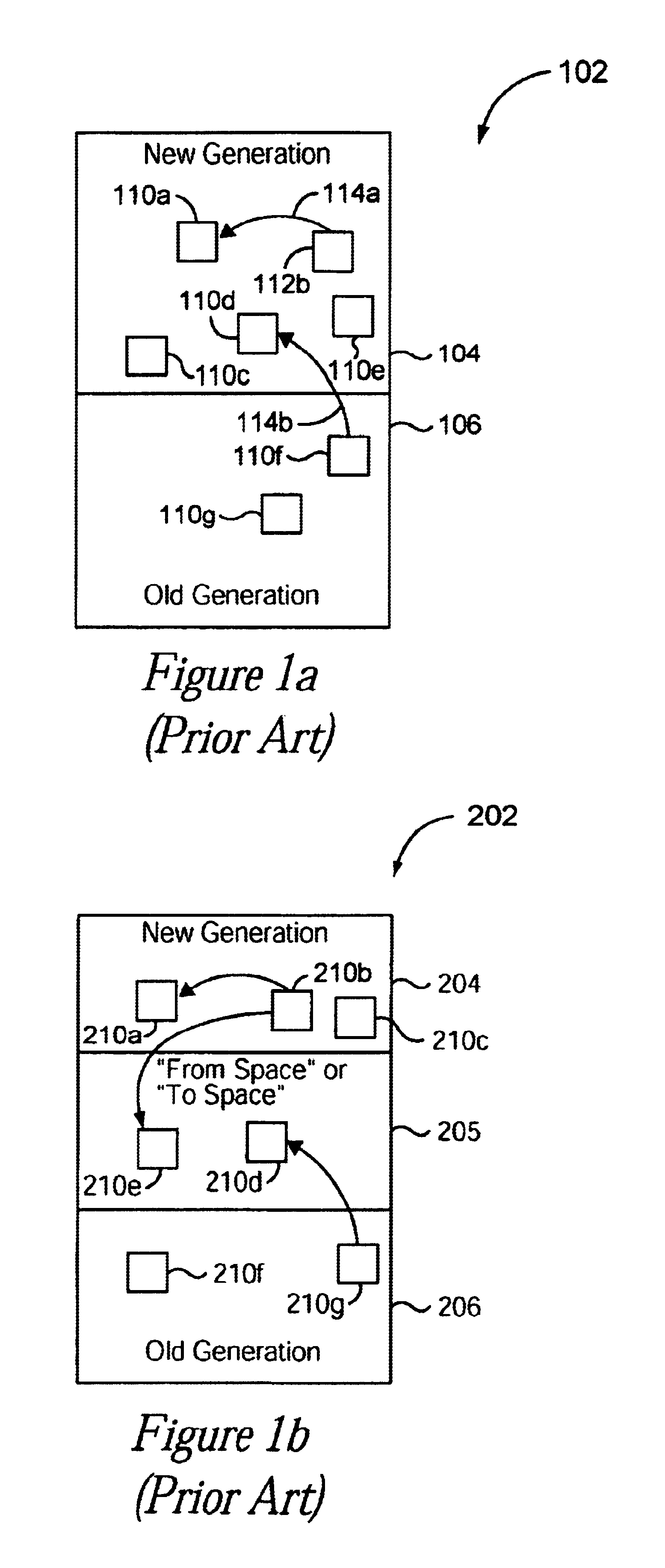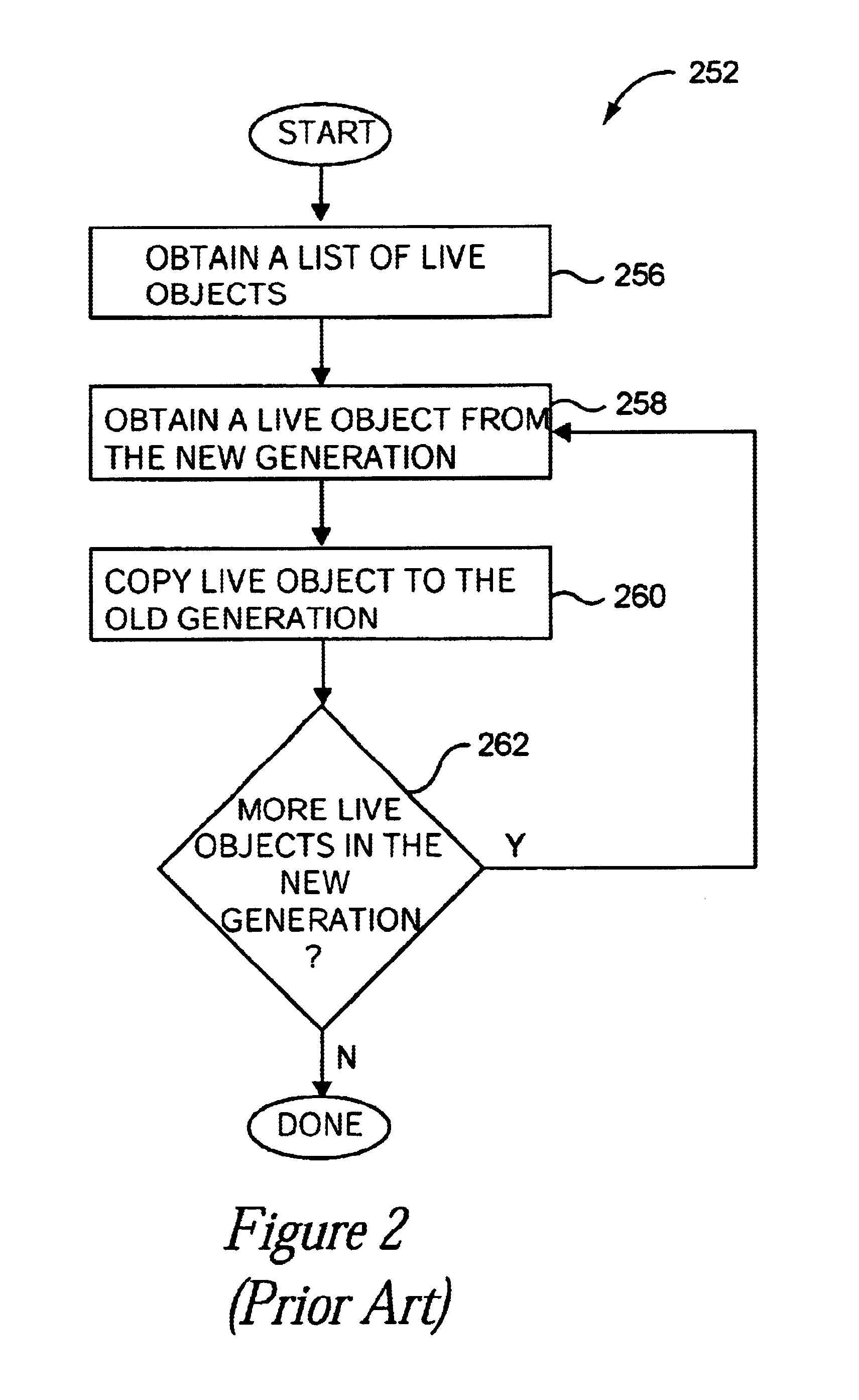Method and apparatus for increasing scavenging garbage collection effectiveness
- Summary
- Abstract
- Description
- Claims
- Application Information
AI Technical Summary
Problems solved by technology
Method used
Image
Examples
Embodiment Construction
A generational scavenging garbage collection typically involves scavenging a new generation of a managed memory area, which also includes an old generation, when the new generation is filled to the extent that a new object may not be allocated in the new generation. During scavenging, as described in Garbage Collection: Algorithms for Automatic Dynamic Memory Management by Richard Jones and Rafael Lins (John Wiley & Sons Ltd., 1996), which is incorporated herein by reference in its entirety, live objects are copied from the new generation into the old generation. As copying live objects is expensive and slow, a scavenging garbage collection is typically inefficient. Since copying live objects during a scavenging garbage collection causes the garbage collection to be slow and expensive, reducing the number of live objects copied during a garbage collection from a new generation to an old generation may increase the effectiveness and efficiency of garbage collection.
It has been observ...
PUM
 Login to View More
Login to View More Abstract
Description
Claims
Application Information
 Login to View More
Login to View More - R&D
- Intellectual Property
- Life Sciences
- Materials
- Tech Scout
- Unparalleled Data Quality
- Higher Quality Content
- 60% Fewer Hallucinations
Browse by: Latest US Patents, China's latest patents, Technical Efficacy Thesaurus, Application Domain, Technology Topic, Popular Technical Reports.
© 2025 PatSnap. All rights reserved.Legal|Privacy policy|Modern Slavery Act Transparency Statement|Sitemap|About US| Contact US: help@patsnap.com



